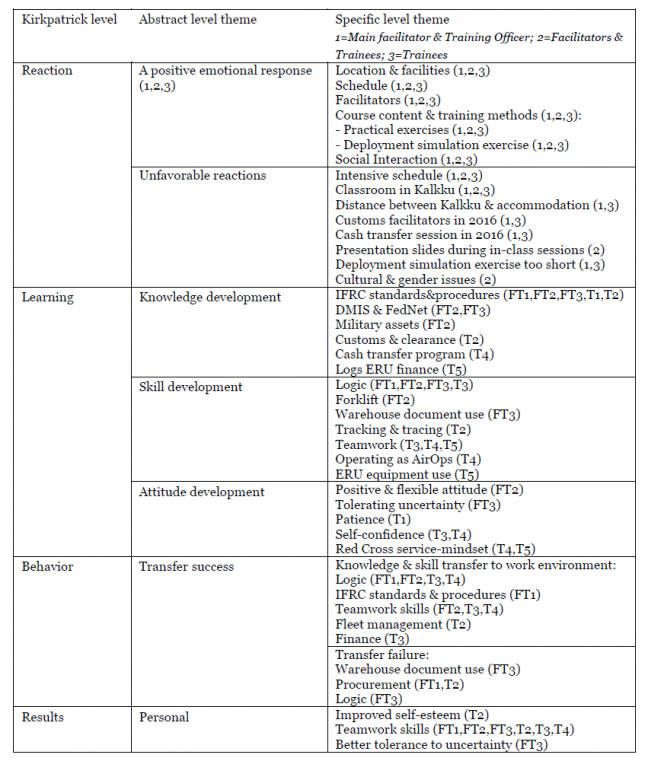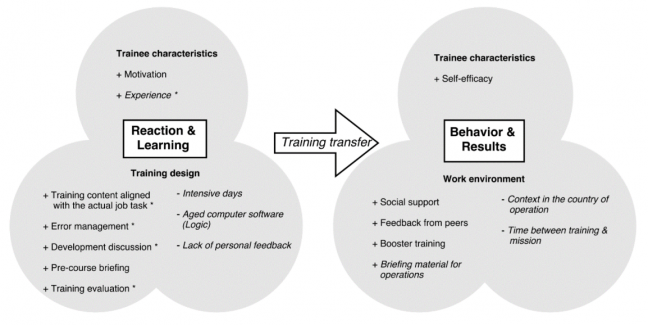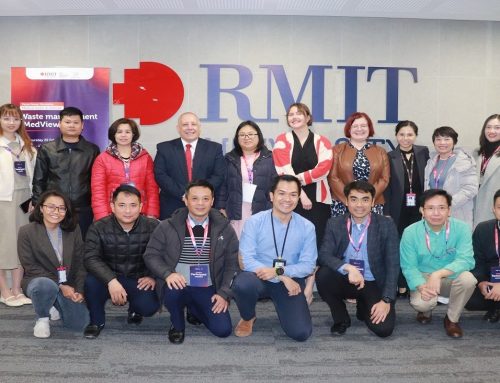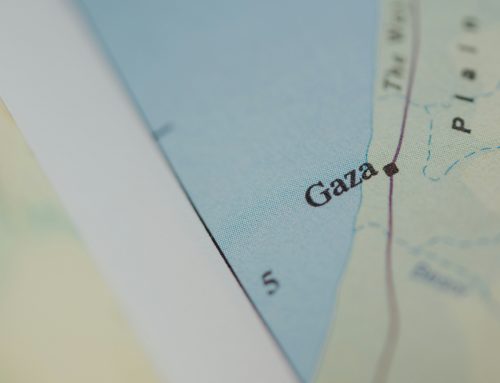It all started in April 2016 after my participation in the Logistics Emergency Response Unit (ERU) Foundation training of Finnish Red Cross (FRC). The course is an intensive one-week training program covering many areas of disaster relief logistics. This experience had left me pondering about the effectiveness of the training week. In addition, there is a need for identifying gaps in humanitarian logistics trainings (Bölsche et al., 2013). Furthermore, more research about what people learn from logistics trainings should be conducted (Gralla et al., 2015). The aforementioned led me to conduct this study.
Hence, the aim of my thesis was to evaluate the effectiveness of the Logistics ERU Foundation training of FRC, and the factors that influence its success by using Kirkpatrick’s four-level model for training evaluation. In addition, I wanted to support Finnish Red Cross in improving their logistics training.
I ended up developing two research questions to achieve the aim of my thesis: 1. How do trainees, facilitators and HR personnel perceive the efficacy of the Logistics ERU Foundation training of Finnish Red Cross in Kirkpatrick’s four-levels? 2. Which factors influence training transfer of Logistics ERU Foundation training?
In order to answer these questions, I used the Kirkpatrick’s four-level model for training evaluation as the framework for qualitative investigation of training transfer, from the perspectives of trainees, facilitators and Human Resource (HR) personnel. In total, ten respondents were interviewed.
The Kirkpatrick’s four-levels is a hierarchical evaluation model focusing on training outcomes of reaction, learning, behavior and results. Reaction represents the participants’ emotional (enjoyment and satisfaction) response to the training; learning represents post-training changes in participants’ skills, knowledge and attitudes; behavior, which can also be defined as the “transfer measure”, concerns measuring changes in behavior that take place when participants have returned from the training to the work environment; and results include measuring the impact from changes in learning and behavior on trainees. The Kirkpatrick model was also used as the framework for investigating which factors influence the four levels of reaction, learning, behavior and results.
Key findings of the study:
The findings of my study (see Table 1) revealed that at least from the outcomes of the reaction, learning and results level, the Logistics ERU Foundation course was effective when considering each respondent’s perspective. The overall reaction towards the course was positive as all respondents expressed how much they liked the training. The positive reaction and attitude of trainees also seemed to have facilitated training transfer of the Logistics ERU Foundation training, which is in line with what the Kirkpatrick model suggests. The evaluation of the learning level showed that knowledge, skill and attitude development was somewhat different between each respondent, which was partially dependent on each respondent’s occupational background and personal interests. However, the learning level did match with the Logistics ERU Foundation training goals when considering the course content and the focus on teamwork skills and work in unpredictable high-stress job environments. The results level-outcomes showed that personal level improvements were in line with skills needed in logistics ERU operations. On the other hand, the evaluation of the behavior level outcomes revealed that some respondents were not able to optimally apply the learned knowledge and skills in logistics ERU operations.
Table 1: Thematic map presenting training outcomes of the Logistics ERU Foundation training according to the Kirkpatrick model

In the second section of my analysis (see Figure 1), I also evaluated and identified multiple factors that influence training transfer of the Logistics ERU Foundation training.

Figure 1: Factors influencing training transfer of Logistic ERU Foundation training according to Kirkpatrick’s four levels
The figure represents the factors that had an influence on Kirkpatrick’s four levels. The results showed, that despite many factors had a positive influence on training transfer (marked with a “+”), some factors had a negative impact on the training transfer outcomes (marked with a “-“). Thus, when considering the improvement of future Logistics ERU Foundation trainings, factors indicated with a “-“ should receive attention. For instance, the factor, context in the country of operation, revealed that because of the various operational environments where logistics ERU operations take place, it is challenging to match the course content with the knowledge and skills needed in the actual job. This is in line with the fact that humanitarian logistics faces a challenge what it comes to humanitarian contexts developing faster than logistics skills and competencies (Bölsche et al., 2013). Factors that would need some adjustment or improvement were marked additionally with a “*”. Themes in italics emerged inductively from the interview data.
So, how did the Logistics ERU Foundation training prepare trainees for the field?
Based on the identified themes and gaps, it could be concluded that the training prepared delegates for ERU operations only partially, which is in line with Tonhäuser and Büker (2016) and Rosenberg (2013), who state that the main challenge of training programs is that trainees do not apply the acquired skills optimally in the workplace and that without post-training support there is a risk of training transfer failure. Hence, despite the positive reaction towards the Logistics ERU Foundation training, there was room for improvement regarding the training effectiveness.
References:
Bölsche, D., Klumpp, M. and Abidi, H. (2013) Specific competencies in humanitarian logistics education. Journal of Humanitarian Logistics and Supply Chain Management, 3 (2) 99-128.
Gralla, E., Goentzel, J. and Chomilier, B. (2015) Case study of a humanitarian logistics simulation exercise and insights for training design. Journal of Humanitarian Logistics and Supply Chain Management, 5 (1) 113-138.
Rosenberg, M.J. (2013) At the moment of need: the case for performance support. Santa Rosa: The eLearning Guild.
Tonhäuser, C. and Büker, L. (2016) Determinants of transfer of training: a comprehensive literature review. International Journal for Research in Vocational Education and Training, 3 (2) 127-165.
To know more about the best Master’s thesis award and to find Karl’s thesis, please visit our website.




